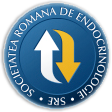
- Login
- Register
- Home/Current Issue
- About the journal
- Editorial board
- Online submission
- Instructions for authors
- Subscriptions
- Foundation Acta Endocrinologica
- Archive
- Contact
 Romanian Academy
Romanian Academy
 The Publishing House of the Romanian Academy
The Publishing House of the Romanian Academy

ACTA ENDOCRINOLOGICA (BUC)
The International Journal of Romanian Society of Endocrinology / Registered in 1938in Web of Science Master Journal List
Acta Endocrinologica(Bucharest) is live in PubMed Central
Journal Impact Factor - click here.

-
Clinical review/Extensive clinical experience
Hengky A, Pratama KG, Tandarto K
Mortality and Cardiovascular Risk Reduction after Reversion of Prediabetes to Normoglycemia: A Systematic ReviewActa Endo (Buc) 2024 20(1): 74-79 doi: 10.4183/aeb.2024.74
AbstractIntroduction. It is unclear whether reversion to normoglycemia decreases overall cardiovascular events and all-cause mortality risk in the long term. We aim to investigate the magnitude of change in cardiovascular risk and mortality in patients who reverted from a prediabetes state. Methods. Three electronic databases, including PubMed, Proquest, and EBSCOHost databases, were utilized. A manual hand search of articles was also done. We selected studies that measure cardiovascular risk and all-cause mortality risk after reversion from prediabetes to normoglycemia. The following terms and its variant were used in the search strategy: ‘reversion,’ ‘prediabetes,’ ‘normoglycemia,’ cardiovascular risk,’ and ‘mortality.’ Results. Seven studies with a total of 73,845 participants were obtained. Most studies suggest that reversion of prediabetes reduced the cardiovascular and allcause mortality risk (RR: 0.50 – 0.78) compared to persistent prediabetes state or progression to diabetes with long-term follow-up ranging from 5 to 12 years, while two studies did not show significant association in CVD and all-cause morality risk. Conclusion. Although there were mixed results regarding if prediabetes poses a higher risk than normoglycemia for cardiovascular events and all-cause mortality, measures to normalize blood glucose for prediabetes should still be advocated. -
Editorial
Coman L, Paunesc H, Catana R, Coman LI, Voiculescu S, Coman OA
Alzheimer’s Disease – Estrogens and Selective Estrogen Receptor Modulators, Friends or Foes?Acta Endo (Buc) 2017 13(1): 77-83 doi: 10.4183/aeb.2017.77
AbstractAlzheimer’s disease(AD) is the leading cause of dementia and is characterized by the presence of extensive plaque deposition and neurofibrillary pathology. The aim of the present study was to make an update regarding the influence of estrogens and SERMs on inflammation and on the resolution of inflammation, respectively, focusing on these most important features implicated in the pathophysiology of AD. Several hypothesised mechanisms of action of estrogens and SERM are exposed and also some relevant clinical studies on this subject are analysed. The analyzed studies have a high heterogeneity of preparations used, of administration routes, of the female population included and of the periods of time from the appearance/ induction of menopause to the therapeutic intervention and also of follow-up periods of patients and of the means of evaluating their cognitive decline. One can say that all the ways of pharmacological influence on the membrane or intracellular signalling system associated to estrogens that may have clinical importance in the prevention and possibly in the treatment of AD have not been exhausted. Estrogens with selective ERα or G protein-coupled estrogen receptors (GPER1 or GqMER) effects could be used to influence the resolution of inflammation process, with positive effects on AD evolution. -
Case Report
Kotwal SK, Kotwal S, Gupta R, Singh JB, Mahajan A
Cerebellar Ataxia as A Presenting Feature of HypothyroidismActa Endo (Buc) 2016 12(1): 77-79 doi: 10.4183/aeb.2016.77
AbstractContext. Besides its typical features, hypothyroidism comes to notice sometimes with neurologic features like reversible cerebellar ataxia, dementia, peripheral neuropathy, coma, etc. Therefore hypothyroidism should be suspected in all cases of cerebellar ataxia, as it is easily treatable. Objective. Here we illustrate a case of hypothyroidism initially reported with cerebellar ataxia. Case report. A 40 year-old male presented with history of gait-ataxia. His investigations revealed frank primary hypothyroidism with positive anti-TPO antibody. The patient was put on thyroxine and he improved completely within eight weeks. Conclusions. This case report emphasizes that hypothyroidism can present with ataxia as one of the initial features. Therefore, hypothyroidism should be considered in all cases of cerebellar ataxia as it is a reversible cause of ataxia -
Editorial
Sharma M, Modi A, Goyal M, Sharma P, Purohit P
Anti-Thyroid Antibodies and the Gonadotrophins Profile (LH/FSH) in Euthyroid Polycystic Ovarian Syndrome WomenActa Endo (Buc) 2022 18(1): 79-85 doi: 10.4183/aeb.2022.79
AbstractContext. The current study aimed to determine association of anti-TPO with LH/FSH in PCOS women. Design. Current case control study included 33 diagnosed PCOS women and 32 age matched healthy women and were analysed for body mass index (BMI) and waist to hip ratio (WHR), fasting blood glucose (FBG), free T3 (FT3), free T4 (FT4), Thyroid stimulating hormone (TSH), dehydroepiandrostenedione (DHEA-S), total testosterone, follicular stimulating hormone (FSH), luteinizing hormone (LH) and anti thyroperoxidase antibodies (anti-TPO). Data was statistically analysed by Student’s t – test and Pearson’s correlation analysis. Results. Of the total PCOS women, 45% were obese and 34.37% had raised anti-TPO. The biochemical profile of obese PCOS women showed significantly raised FBG (p<0.0001), LH (p<0.0001), Testosterone (p<0.0001) and DHEA-S (p=0.0021) as compared to non-obese PCOS women. The LH/FSH ratio was significantly raised in PCOS women as compared to control (p<0.0001). Pearson’s correlation analysis showed a significant association of anti-TPO with FBS, testosterone, LH and LH/FSH in obese PCOS and with Testosterone and LH in non-obese PCOS women using SPSS 21. Conclusion. The current study shows a high prevalence of AITD in euthyroid PCOS women and suggests a strong link of euthyroid obese PCOS women to autoimmunity due to the hyper-anderogenism and a higher LH/FSH ratio. -
Clinical review/Extensive clinical experience
Nanu M, Delia CE, Toma GM, Ardeleanu I, Nanu I, Stemate M, Nuta D, Gheorghiu ML
Iodine Status in Romania after 20 Years of Mandatory Salt Iodization: Discordant Results in Schoolchildren and NeonatesActa Endo (Buc) 2024 20(1): 80-89 doi: 10.4183/aeb.2024.80
AbstractObjective. To monitor the iodine status in Romanian schoolchildren and neonates after 20 years of mandatory salt iodization. Subjects and methods. In a national representative sample of 1352 children (7-12 years) we measured median urinary iodine concentration (mUIC) and creatinine (UCC) in spot urine samples and investigated household use of iodized salt. From 18349 neonates registered in the MEDILOG program for TSH screening we calculated the percentage of neonatal TSH >5 mIU/L (<3% indicating adequate iodine intake). Results. mUIC in schoolchildren was 141 μg/L (bootstrapped 95% CI 134, 146), showing adequate iodine intake in all but 1 county; mUIC was similar in historical endemic and non-endemic counties (140 μg/L and 143 ug/L, respectively) and in urban and rural areas (140 μg/L and 142 μg/L, respectively); mUIC/UCC = 118 ug/g. Iodized salt was used in 62% of households. In children using iodized salt (61.7%), mUIC was higher than in those using coarse (non-iodized) salt (24.6%): 150 vs. 121 μg/L (p<0.001). The percentage of nTSH >5 mIU/L was 14.7% (3.2%-27.3%), higher in non-endemic counties and urban areas. Conclusion. The current salt iodization program for households and bakery industry ensures an adequate iodine intake in schoolchildren. Discordantly, nTSH levels indicate a mild-moderate ID in neonates, suggesting ID in pregnant women. The percentage of households using iodized salt is below the recommended >90% needed for an efficient ID prevention program. More efforts should be directed to increase the public awareness on the health risks of ID and the benefits of ID prevention, notably for the neurointellectual development in children. -
Endocrine Care
Giulea C, Enciu O, Toma EA, Martin S, Fica S, Miron A
Total Thyroidectomy for Malignancy - is Central Neck Dissection a Risk Factor for Recurrent Nerve Injury and Postoperative Hypocalcemia? A Tertiary Center Experience in RomaniaActa Endo (Buc) 2019 15(1): 80-85 doi: 10.4183/aeb.2019.80
AbstractIntroduction. Surgery for thyroid cancer carries a higher risk of morbidity given the region’s complicated anatomy, the setting of malignancy and extent of the surgery. Aim. To investigate the rate of complications related to the recurrent nerve and parathyroid glands lesions in patients with thyroid carcinoma that undergo thyroid surgery and lymph node dissection. Patients and Methods. The data of 71 patients who underwent total thyroidectomy and 19 patients who underwent total thyroidectomy and central neck dissection with various associated neck dissection techniques were investigated using appropriate statistical tests. Results. As expected, the rate of recurrent nerve injury observed in the neck dissection group was higher than in the total thyroidectomy group (15.7% vs. 2.8%, p=0.05). As for postoperative hypocalcemia, the rate observed in the neck dissection group, both for postoperative day 1 (p<0.0001) and day 30 (p=0.0003) was higher than in the total thyroidectomy group (68.4% vs. 19.7% postoperative day 1, 31.5% vs. 4.2% postoperative day 30). Conclusions. The risk of morbidity concerning the recurrent nerve injury and postoperative hypoparathyroidism increases with the extent of surgery. Extensive surgery may achieve proper oncologic outcomes but increases the risk of postoperative morbidity and decreases quality of life. In deciding for extensive surgery, both patient and medical team need to understand these risks. -
Editorial
Macut D, Opalic M, Popovic B, Ognjanovic S, Bjekic-Macut J, Livadas S, Petrovic T, Hrncic D, Stanojlovic O, Vojnovic Milutinovic D, Micic D , Mastorakos G
The Effects of Endocrine Disruptors on Female Gonadal Axis: an UpdateActa Endo (Buc) 2023 19(1): 81-86 doi: 10.4183/aeb.2023.81
AbstractEndocrine disruptors (EDs) are considered to have an impact on the function of reproductive axis at different levels as well on reproductive organs in both sexes. Complexity of female reproductive system influenced with various stressors including EDs lead to morphological and functional alterations. This is resulting in modulation of neuroendocrine regulation with consequent developmental irregularities and derangements, causative infertility, endometriosis as well as premature ovarian insufficiency or polycystic ovary syndrome. A number of experimental clues was obtained on female animal models using various EDs such as synthetic estrogens and phytoestrogens, neurotransmitters, pesticides or various chemicals. These substances lead towards consequent derangement of the neuroendocrine control of reproduction from early phases of reproductive development towards different phases of adult reproductive period. This text will address some novel insights into the effects of EDs on neuroendocrine regulation of gonadal axis, effects on ovaries as well on endometrium during implantation period. -
Case Report
Cander S, Gul Oz O, Yildirim-Eryilmaz N, Ugras N, Erturk E, Ersoy C
Adult Nesidioblastosis, Diagnostic Value of the Selective Arterial Calcium Stimulation Test and Perfusion Computed Tomography. A Case ReportActa Endo (Buc) 2015 11(1): 85-92 doi: 10.4183/aeb.2015.85
AbstractEndogenous hyperinsulinemia was found in a 38-yearold female patient with recurrent neuroglycopenic symptoms (the glucose level was 25 mg/dL, insulin 43.9 μ/mL, C-peptide 5.54 ng/mL). No lesion was found on imaging tests including enhanced computed tomography (CT) methods performed with a preliminary diagnosis of insulinoma. A suspicious hyperperfusion was present in the pancreatic tail on the perfusion CT examination performed after obtaining approval. The selective arterial calcium stimulation test (SACST) result was consistent with a diffuse disease in the body and tail. The patient underwent partial (75%) pancreatectomy and is now followed up as a diabetes patient on intensive insulin treatment at the postoperative 38th month. The most common cause of endogenous hyperglycemia in hypoglycemia patients is insulinoma. The noninsulinoma pancreatogenous hypoglycemia syndrome (NIPHS) is rarely seen in the adult age group. Although invasive, SACST seems to be the most suitable test to differentiate diffuse or multiple disease from insulinoma and to guide the surgery when advanced radiological imaging methods are inadequate to detect the presence of insulinoma. Regarding perfusion CT, it would be more appropriate to wait for comparative data to be put forward in a more consistent manner. When no response can be obtained to medical treatment in NIPHS, partial/total pancreatectomy is the most appropriate treatment option as it enables recovery from the hypoglycemic episodes despite leading to a significant condition like diabetes. -
Endocrine Care
Pascanu I, Banescu C, Benedek T, Duicu C, Csep K, Dema A
Thyroid dysfuntion in children with Down’s syndromeActa Endo (Buc) 2009 5(1): 85-92 doi: 10.4183/aeb.2009.85
AbstractBackground. Patients with Down’s syndrome have an increased prevalence of\r\nautoimmune thyroid diseases.\r\nAim. The purpose of this study was to assess the prevalence of thyroid dysfunction in\r\nchildren with Down’s syndrome (DS) and to find the best screening and management strategy\r\nin this group of patients.\r\nMethods. A total of 63 DS patients aged between 5 days and 18 years from our University\r\nHospital, were recruited. In all patients, serum free T4, and TSH were measured, the presence\r\nof congenital anomalies and specific clinical findings were assessed. Karyotype was performed\r\nin each case.\r\nResults. Sixty patients showed total 21 trisomy. Mosaicism was present in other 2 cases\r\n(3.17%) and only one girl had 47,XXder(14;21)(q10;q10)+21.\r\nHigh TSH level was seen in 24 out of 63 cases (38 %) of which 1 (1.5%) had congenital\r\nmixedema while the other 23 had a high TSH level. According to TSH levels, these 23 patients\r\nwere divided into two groups: the first group with TSH between 6-10 microUI/mL (17 patients-\r\n27%), and the second with TSH>11 microUI/mL (6 patients - 9.5%). Thyroid ultrasound was\r\nalso performed and antibodies to thyroid peroxidase, anti-TPO, were measured, when TSH\r\nlevel was high. In all cases thyroid ultrasound showed a normal located thyroid gland. In the\r\ngroup of patients with TSH level above 11 microUI/mL, two had congenital heart disease, but\r\nnone of them had gastrointestinal disease.\r\nHyperthyroidism was not observed in any of the cases.\r\nConclusions. Children with DS have high prevalence of thyroid dysfunction and\r\nbiochemical screening of this is essential. Subtle thyroid abnormalities were the most common\r\nfinding in DS. -
Endocrine Care
Roman G, Rusu A, Graur M, Creteanu G, Morosanu M, Radulian G, Amorin P, Timar R, Pircalaboiu L, Bala C
Dietary Patterns and their Association with Obesity: a Cross-Sectional StudyActa Endo (Buc) 2019 15(1): 86-95 doi: 10.4183/aeb.2019.86
AbstractContext. Scarce data on dietary habits in Eastern European countries is available and reports investigated individual food items and not dietary patterns in these populations Objective. To identify dietary patterns and to explore their association with obesity in a sample from Romanian population. Design. Cross-sectional. Subjects and Methods. This was an analysis of data collected from 1398 adult participants in ORO study. Data on lifestyle, eating habits and food frequency consumption were collected. Results. By principal component analysis we identified 3 dietary patterns explaining 31.4% of the diet variation: High meat/High fat pattern, Western pattern and Prudent pattern. High meat/High fat pattern was associated with male gender, lower educational level, living in a rural, smoking and a higher probability for the presence of obesity (OR 1.2 [95%CI: 1.1-1.4]). Western pattern was associated with younger age, a higher level of physical activity and smoking. Prudent pattern was associated with older age, female gender, a higher level of physical activity, not smoking status and a lower probability for the presence of obesity (OR 0.8 [95%CI: 0.7-0.9]). Conclusions. This study provides for the first-time information on the association between dietary patterns in adults from an Eastern European country and the presence of obesity.